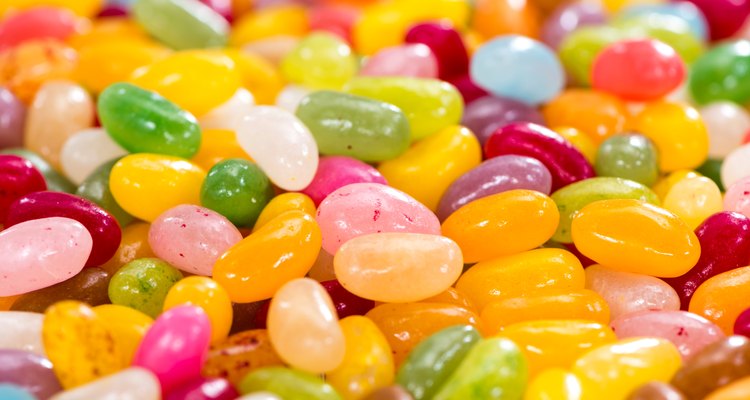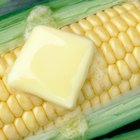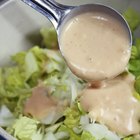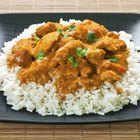
HandmadePictures/iStock/Getty Images
A food additive made from the sap of the acacia tree, gum arabic, also called acacia gum, is harvested from wild trees in the Middle East as well as parts of Africa and west Asia. Gum arabic is added to a wide variety of foods, acting as a stabilizer to help bind the foods together, and when used in larger quantities can be a source of soluble fiber.
Desserts and Confections
Many hard candies are made with gum arabic, which helps prevent the candy from sticking to the teeth and promotes a longer-lasting treat, according to Francis Thevenet in the book "Food Stabilisers, Thickeners and Gelling Agents." Gum arabic is often used in soft-molded candies, such as gum drops, and chewy varieties of candy as well. Sugar-free hard candies and low-fat ice cream can also be made with gum arabic.
Soda and Other Beverages
Gum arabic is included in the ingredient list of many types of soda. The additive absorbs liquid, which helps to thicken the soda so it has a richer feeling as it comes into contact with your tongue, according to Andrew Schloss, author of "Homemade Soda." That slightly thicker texture also means that the soda sticks to your tongue for short periods of time, which allows you to savor the sweet flavor. Gum arabic is also used as a stabilizer in beer, preventing the final product from fermenting once the brewing process is complete.
Seasoned Nuts
Honey-roasted and other seasoned nuts often contain gum arabic. The additive helps the salt, sugar or other spices stick to the nuts before the roasting process, according to Thevenet. This process works because the gum arabic is wet so the spices more easily stick. Gum arabic is also used for candy-coated nuts, such as almonds, and accomplishes the same goal of helping the coating fully stick to the outside of the nut.
Micellaneous Foods
Low-fat salad dressing often contain gums, including gum arabic, to replace some of the fat and to help prevent the oil and water from separating. The additive might be an ingredient in mustard, dried egg products, creamy dairy foods, sherbet, sorbet, clotted cream, cheese and dairy-based desserts, such as pudding, according to the Codex General Standard for Food Additives. Gum acacia is naturally high in soluble fiber and might also be added to certain packaged baked goods, rolled oats, breakfast cereals and bread to boost the soluble fiber content.
Related Articles

Common Food Emulsifiers

Foods That Have Xanthan Gum

Spray Tanning Ingredients
Role of Xanthan Gum in Vegan Baking

How to Remove Gum From Nylon

How to Use Xanthan Gum in Baking

Can You Use Soda to Replace Oil in a ...

Can I Use Soda Pop in Brownies?

What Is Indian Flat Bread Called?
Alternatives to Xanthan Gum for Binding

Pantene Shampoo Ingredients

Ingredients in Hair Mousse

How to Use Coca Cola As Grease Stain ...

Can I Make Boxed Devil's Food Cake Mix ...

Nutrition Facts for Tootsie Rolls
What Is the Purpose of Cream of Tartar ...

A List of Leavening Agents

Will Cream of Tartar Whiten Teeth?

Can You Use Cream of Tartar to Make ...

Sources of Calcium in Indian Food
References
- Food Stabilisers, Thickeners and Gelling Agents; Alan Imeson
- Center for Science in the Public Interest: Food Additives
- Homemade Soda; Andrew Schloss
- Codex General Standard for Food Additives: Gum Arabic (Acacia Gum)
- U.S. Food and Drug Administration: Agency Response Letter GRAS Notice No. GRN 000247
Writer Bio
Sara Ipatenco has taught writing, health and nutrition. She started writing in 2007 and has been published in Teaching Tolerance magazine. Ipatenco holds a bachelor's degree and a master's degree in education, both from the University of Denver.
Photo Credits
HandmadePictures/iStock/Getty Images